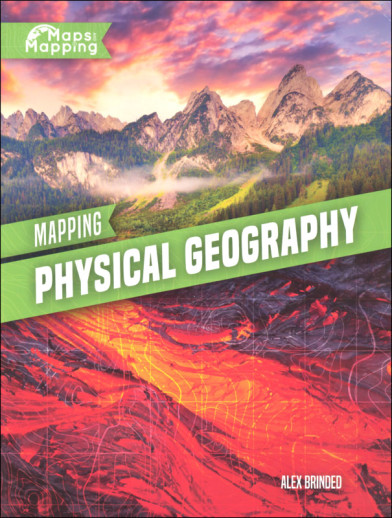We use cookies to make your experience better. To comply with the new e-Privacy directive, we need to ask for your consent to set the cookies. Learn more.
Mapping Physical Geography (Maps and Mapping)
SKU
081443
ISBN
9781534531109
Grade 3-5
5 In Stock. Item will be unavailable when sold out.
Our Price
$11.50 $11.50 $8.75
Rainbow Savings: $2.75
Description
Publisher's Description of Mapping Physical Geography (Maps and Mapping)
Physical geography is a common feature shown on maps, and it's important for readers to know how to interpret maps that depict the natural world around them. From the informational main text, they gain knowledge of what various symbols mean on a map and how to both read and create maps that show physical geography. Eye-catching design elements and colorful map examples enhance this learning experience for readers. Fun fact boxes, detailed graphic organizers, useful diagrams, and a helpful glossary also add extra insight into this topic that reflects aspects of both social studies and science curricula.
Category Description for Maps and Mapping
Maps are useful to see certain features, landmarks, people, vegetation, or animals. This series of books covers mapping of trade, oceans, people, physical geography, weather, as well as towns and cities. Very vibrant maps and pictures. 32 pgs, pb. ~Amber
Details
| Product Format: | Paperback |
|---|---|
| Grades: | 3-5 |
| Brand: | Kidhaven Publishing |
| ISBN: | 9781534531109 |
| Length in Inches: | 11 |
| Width in Inches: | 8.375 |
| Height in Inches: | 0.125 |
| Weight in Pounds: | 0.35 |
Videos
This product doesn't have a video
Reviews
No Ratings
Be the first to review this item
Product Q&A
Have a question? Ask owners.Have a question about this? Ask people who own it.
Start typing and see existing answers.
Instant Answers
- Start typing and we'll see if it was already asked and answered.
- If there aren't already some matches, submit a new question.
- You'll get fast answers from customers who really own the item(s) and from our product experts. (About half the time you'll get an answer in under 2 hours!)
Good Topics To Ask About
- Which items will best meet your needs
- What customers who own an item think of it
- How to use, fix, or take care of an item
- Product information
- General advice related to the types of products we sell
- Our store policies
Customer Support
For questions about an order you have placed, please contact customer support directly.
Scopri gli altri prodotti









